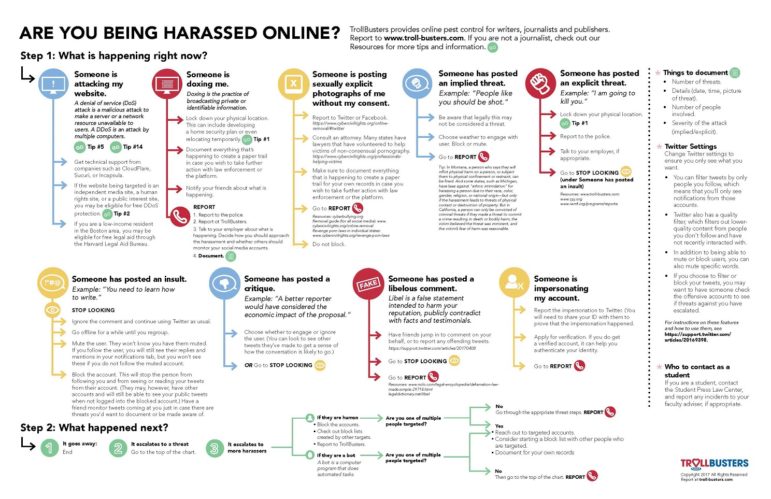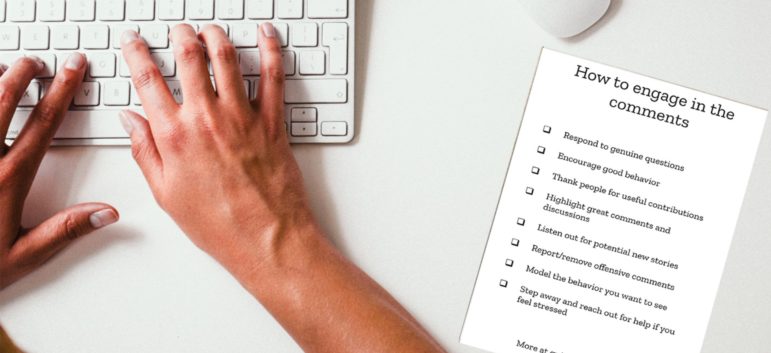

Female Journalists Fight Online Harrassment
Online tormentors have called Swedish broadcaster Alexandra Pascalidou a “dirty whore,” a “Greek parasite” (a reference to her ethnic heritage), a “stupid psycho,” “ugly liar” and “biased hater.” They have threatened her with gang rape and sexual torture in hideous detail.
 But Pascalidou has chosen to fight back by speaking out publicly, as often as she can, against the online harassment faced by female journalists. In November 2016, she testified before a European commission about the impact of gender-based trolling. “(The perpetrators’) goal is our silence,” she told the commission. “It’s censorship hidden behind the veil of freedom of speech. Their freedom becomes our prison.”
But Pascalidou has chosen to fight back by speaking out publicly, as often as she can, against the online harassment faced by female journalists. In November 2016, she testified before a European commission about the impact of gender-based trolling. “(The perpetrators’) goal is our silence,” she told the commission. “It’s censorship hidden behind the veil of freedom of speech. Their freedom becomes our prison.”
In April 2017, Pascalidou appeared on a panel at the International Journalism Festival in Italy, discussing how to handle sexist attacks online. She described the vitriol and threats as “low-intense, constant warfare.”
“Some say switch it off, it’s just online,” she told The Sydney Morning Herald. “It doesn’t count. But it does count, and it’s having a real impact on our lives. Hate hurts. And it often fuels action IRL (in real life).”
Other media watchdogs have taken notice. International News Safety Institute director Hannah Storm has called online harassment “the scourge of the moment in our profession” and a “major threat to the safety and security of women journalists.”
“When women journalists are the target, online harassment quickly descends into sexualized hate or threats more often than with men,” she added. “Women are more likely to be subjected to graphic sexual and physical violence.”
Research supports Storm’s statements. One 2014 study on Twitter abuse targeting celebrities found that “journalism is the only category where women received more abuse than men, with female journalists receiving roughly three times as much abuse as their male counterparts.”
 A 2013 poll by the International Women’s Media Foundation (IWMF) found that two-thirds of respondents reported facing violent and sexual threats online in response to their work.
A 2013 poll by the International Women’s Media Foundation (IWMF) found that two-thirds of respondents reported facing violent and sexual threats online in response to their work.
Case in point: Indian journalist Dhanya Rajendran was vilified online just for panning a movie on Twitter. The editor-in-chief of the digital news platform The News Minute was called a prostitute, asked to upload nude videos of herself and was accused, in graphic terms, of performing sex acts with her supporters. The trolling lasted for three days and drew more than 30,000 tweets.
“Almost all those abuses were sexually colored,” Rajendran told the International Federation of Journalists, a watchdog group that is sponsoring a “ByteBack Campaign” against online harassment of women journalists.
“There is no way to guess what will incur online wrath,” said Storm. “It could be politics or something as benign as a movie review. There are no parameters.”
Anecdotal evidence of gender-based internet violence is not hard to find. Statistics on scope and impact are another matter.
“The numbers are difficult to pin down,” said Elisa Muñoz of the IWMF, who has called online harassment “one of the most pernicious problems facing women journalists today.”
Some women may remain silent for fear of online reprisal or being shrugged off by newsroom bosses. They make a conscious decision to maintain a low profile and steer clear of issues likely to ignite cyber bullying.
The 2016 Internet Freedom Festival in Valencia, Spain, included sessions discussing how to handle online abuse. Some of the tips for newsrooms included:
- Create a cyber-harassment hotline.
- Incorporate cyber-safety education into existing training programs for journalists.
- Create networks so journalists don’t feel alone and can learn from one another.
- Connect groups within countries and across borders to identify solutions.
- Explore the need for legal and emergency assistance.
- Research cyberstalking laws around the world.
- Consider how to deal with the psychological impact of cyber abuse.
More tips can be found via journalist Julie Posetti of Fairfax Media, who discussed how newsrooms can counter online misogyny and harassment during the 2016 International Newsroom Summit in London. Her advice included:
- Acknowledge the problem and take the impacts seriously.
- Provide specific training for women journalists to help them deal with online misogyny.
- Ensure that senior management is aware of the issues and disseminate to all staff.
- Escalate early, report breaches to the police.
- Request access to technical, legal and psychological support.
- Devote editorial resources to coverage of these issues.
- Make a plan to deal with potential harassment at the commissioning stage of “lightning rod” stories.
- Develop holistic strategies: involve cybersecurity staff, senior editors, editorial trainers, workplace health and safety teams and social media editors in developing and disseminating online harassment policies and guidelines.
In an interview with Posetti in The Sydney Morning Herald, Pascalidou spoke openly about the emotional price she has paid as a result of facing constant online harassment.
“Eventually, you start censoring yourself,” she said. “You blame and shame yourself. At some point, you even start hating yourself — and there is something about the nameless nature of it — when you don’t know where a threat is coming from that poisons your mind.”
 This post originally appeared on the IJNet website and is cross-posted here with permission.
This post originally appeared on the IJNet website and is cross-posted here with permission.
Sherry Ricchiardi is an international journalist and media development specialist based in Washington, DC. She has worked with journalists in 35 countries.











